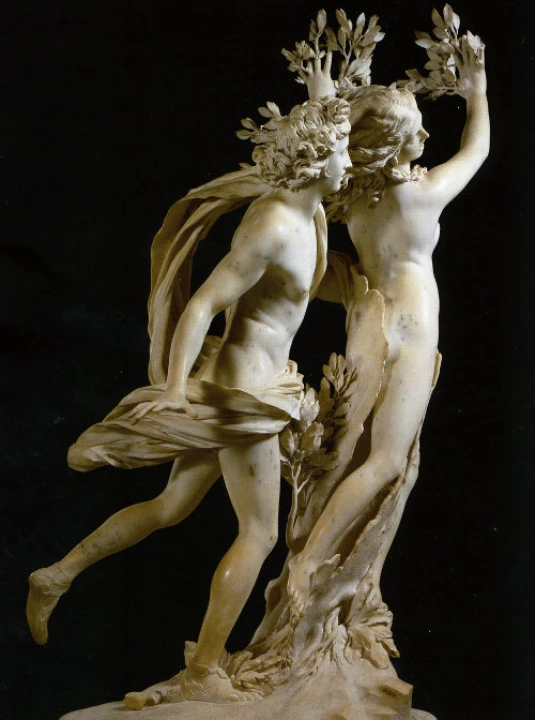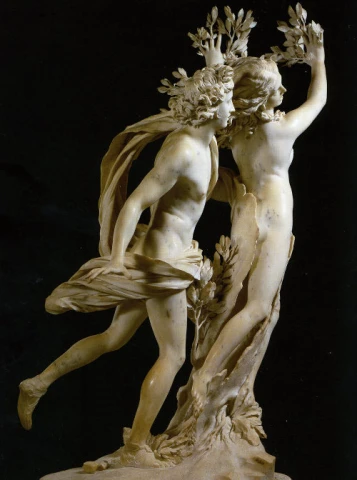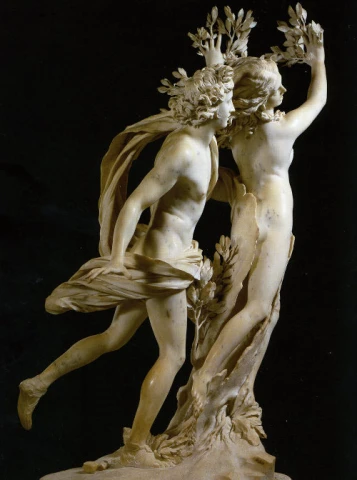WTI Magazine #1 2013 Oct,18
Author : Enrico De Iulis Translation by: The Language Institute
The Borghese Gallery is a place of rare beauty, conceived and experienced as a large container of powerful art and politics. In 1606, Cardinal Scipione Borghese wanted it right from the start with the intention of having a huge display case in which his wonderful collection could impress his guests and stun them with beauty. Gian Lorenzo Bernini, like no other artist whose works are included in the Galleria during these years and beyond, saw the first nucleus of the collection come together, define itself and grow with him.
He followed his father on construction sites as a child. Later as a teenager and during his artistic formation, Scipione's affinity towards him had noticeable importance. He sensed very early the potential talent of the young Bernini to the point of considering him a genius. At only seventeen years of age, Gian Lorenzo is called by the Cardinal to sculpt a table centerpiece with the theme being the infancy of Jupiter who is nursed by the goat Amaltea in the company of a satyr child.
It is a medium sized centerpiece no larger than 45 cm in height in which the surfaces are treated differently to make the most of the softness of the flesh of the children in contrast to Amaltea's crimped fleece and the soft tufts of hair of the faun's legs. The potential of the young man is clear, and Scipione wants to test it again three years later, with a larger work, a statue that narrates the origins of Rome: Aeneas fleeing burning Troy with his father Anchise on his shoulders and the little Ascanio nearby. The dimensions increase in size and the structure becomes segmented. A broken line that allows one to sense the burden of the weight of the old man thrown off balance with every step, the slowness in moving forward, and a series of very realistic facial expressions aided also by the skill in handling the marble resulting in the difference between the baby's skin and the grown man's and the wrinkled one of the elderly man. At age 20, Bernini grows in muscle strength, in the acute gaze of the portrayed and in a personal style in which the movement in the composition of the sculpture takes hold. After two years, in 1621, he achieves his first true masterpiece, at the age of 23 Bernini creates The Rape of Proserpina. In the segmented structure of the previous sculpture, a whirlwind spirals the characters of this new composition which captures the exact moment when Hades emerges from the underground, grabs Proserpine and with an irresistible force pulls her down. A snapshot, an interruption of action at the moment of greatest pathos, Proserpina shouts and cries as she attempts to push away Hades' face which contorts under the pressure of her hand, the god laughs at the girl's attempts at resistance, his hands grasping her soft hips, his fingers digging into the soft flesh to take hold. The twisting of the characters' bodies thrown off balance, wrapped in drapery, in the muscular scuffle, and in the obvious erotic force which releases the strong grip of the two characters. Cerberus is cautiously keeping watch that no one interrupt the abduction, and he does it resolving the counterweight of a group too shifted to be stable. From now on, the statues of Bernini will always have at their base, an element of storytelling that will contribute to the stability of the structure and Cerberus with his tufts of hair splendidly realized, once again increases the range of yield of the marble which in a single work succeeds in giving at least fifteen different physical sensations.
The skill of Bernini is now clear, having just completed this group, he begins working on the David, in which contortion, expressive output, command of what the material can render, narration, and extreme attention to detail continue to grow. David leaves, on the ground next to himself, his armor and in the moment of maximum concentration, he twists himself to give maximum strength to the launch of the sling. Another masterpiece for the Borghese collection, which was being located in the "casino", that is, the hunting lodge which was in the process of being finished. The last work of Gian Lorenzo's youth for Cardinal Borghese is the definitive statement of his artistic superiority: Apollo and Daphne.
All the elements of the new Bernini concept already present in his David and in the Rape of Proserpine, are amplified and multiplied: the force the two characters running, the sudden halt of Daphne who roots her feet into the ground and from the swinging back of her hair they become branches and leaves intertwined with her arms. The piercing scream of the girl and the surprised ethereal expression of the god. The whole story is told with dozens of soft leaves, very thin sprigs, tragic faces, details chiseled in every minute detail, all seen in a block of marble by a young man of twenty-five with the skill in his hands and the genius in the head.
The element of movement in sculpture had already been approached by some Renaissance and Mannerist sculptors, but never so strongly as to drag the viewer into the space of the event represented. The Baroque style arrives with the new statues of Bernini and, after a few years, from the paintings of Pietro da Cortona and from the architecture of Borromini. Unable to resist the pathos, the sudden movements and theatricality of these works, I have seen people cry in astonishment before Apollo and Daphne, or having to lean on a wall to stand open-mouthed watching Persephone kidnapped. Five hundred years later the young Bernini still has the same force of impact.






